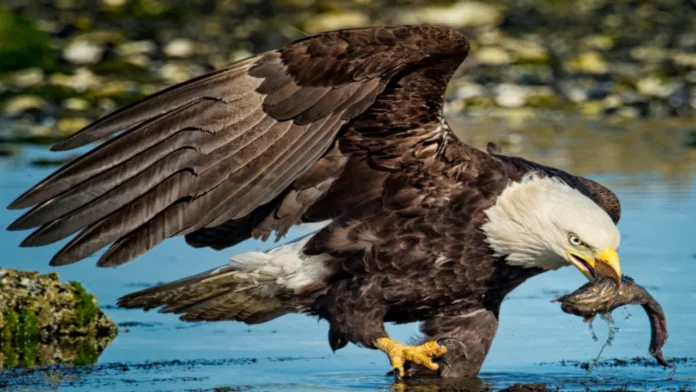
Discovering the Enigmatic Hancock Bird A Deep Dive into Its Habits and Habitat
The Hancock Bird is one of nature’s best-kept secrets. With its striking appearance and elusive behavior, it has intrigued birdwatchers and researchers alike for years. Nestled in the shadows of dense forests, this enigmatic creature offers a glimpse into the intricate tapestry of wildlife that flourishes around us.
Despite its captivating presence, much about the Hancock Bird remains shrouded in mystery. What drives its unique habits? Where does it make its home? This blog post invites you to embark on an exploration of the Hancock Bird—unraveling its physical characteristics, habitat preferences, threats it faces in the wild, and more. Get ready to discover what makes this bird so special and why conservation efforts are crucial for its survival!
Physical Characteristics and Behavior
The Hancock Bird is a striking creature, easily identifiable by its vivid plumage. With iridescent colors that shimmer in sunlight, it draws attention wherever it flits. Its wings are long and powerful, allowing for agile movements through dense foliage.
Behaviorally, the Hancock Bird exhibits intriguing social patterns. Often seen in small groups, they communicate with melodious calls that echo through their habitat. These vocalizations serve various purposes—from attracting mates to warning others of potential threats.
When feeding, these birds display acrobatic skills as they maneuver among branches to reach insects and fruits. Their keen eyesight aids them in spotting food from afar.
Curiously, the Hancock Bird has developed unique nesting habits. They choose elevated locations for their nests—often hidden away from predators—demonstrating both intelligence and instinctive caution in their daily lives.
The Mysterious Habitat of the Hancock Bird
The Hancock Bird is an elusive creature, often found in the most unexpected places. Its habitat ranges from dense forests to secluded wetlands, showcasing its adaptability.
These birds favor areas with abundant vegetation where they can hide and hunt for insects. They build their nests high up in trees, using twigs and leaves for camouflage.
What makes their habitat particularly intriguing is the seasonal shifts they make. During certain times of the year, they migrate to different regions seeking food and more conducive nesting environments.
Researchers have noted that these birds thrive in ecologically diverse settings. Their presence signals a healthy ecosystem, making them vital indicators of environmental health.
Understanding their habitat requirements is crucial as it helps conservationists protect not just the Hancock Bird but also its environment. This delicate balance highlights how interconnected species are within our natural world.
Threats and Conservation Efforts
The Hancock Bird faces several threats that jeopardize its survival. Habitat loss due to urban expansion and agriculture is a significant concern. As forests are cleared for development, these birds lose their natural homes.
Pollution also plays a role in the decline of the Hancock Bird population. Contaminated water sources and pesticide use can disrupt their feeding habits and reproductive success.
Conservation efforts are underway to mitigate these challenges. Organizations dedicated to wildlife protection are raising awareness about the importance of preserving habitats crucial for the Hancock Bird’s survival.
Research initiatives aim to track population dynamics and nesting behaviors. This data helps inform conservation strategies tailored specifically for this enigmatic species.
Community involvement has become vital too. Engaging local residents in habitat restoration projects fosters a deeper connection between people and nature, ensuring that future generations will have the chance to observe this remarkable bird in its natural environment.
Myth vs Fact: Separating Truth from Fiction
The Hancock Bird is shrouded in a captivating mix of myth and reality. Many believe it possesses magical powers, often attributed to its vibrant plumage. This notion has enchanted cultures for generations.
Contrary to these tales, the Hancock Bird serves a vital ecological role. Its diet consists mainly of insects, contributing significantly to pest control in its habitat.
Another common myth suggests that these birds are solitary creatures. In truth, they are highly social and often seen forming flocks during migration seasons.
People frequently claim that spotting a Hancock Bird brings good luck. While this superstition thrives, scientific studies reveal no correlation between bird sightings and fortune.
Understanding what’s true about the Hancock Bird enhances our appreciation for this fascinating species while dispelling misleading beliefs that could hinder conservation efforts or influence public perception negatively.
The Role of Citizen Science in Studying the Hancock Bird
Citizen science plays a vital role in uncovering the mysteries of the Hancock Bird. Enthusiastic bird watchers and nature lovers contribute valuable data that enhances research efforts.
By observing these birds in their natural habitats, citizens help track population trends and behavior patterns. This grassroots involvement provides scientists with extensive datasets that they might not gather alone.
Online platforms enable easy sharing of sightings, photos, and behavioral notes. These contributions create an interactive community passionate about avian conservation.
Moreover, citizen science fosters awareness about the challenges facing the Hancock Bird. Engaging local populations encourages stewardship for their environments, promoting broader ecological initiatives.
Through collaboration between experts and amateurs alike, we gain a deeper understanding of this enigmatic species. Each observation becomes a piece of a larger puzzle—one that reveals insights into life as a Hancock Bird.
Conclusion: Unlocking the Secrets of the Hancock Bird
The Hancock Bird remains one of nature’s most captivating mysteries. Its unique traits and elusive behavior have intrigued birdwatchers, researchers, and wildlife enthusiasts alike. As we delve deeper into its life cycle and habitats, we uncover not only the beauty of this remarkable species but also the challenges it faces in a rapidly changing world.
Conservation efforts hold great importance for safeguarding the future of the Hancock Bird. With ongoing research and dedicated initiatives, we can hope to ensure that this enigmatic creature continues to thrive amidst environmental pressures.
Understanding these birds is not just about appreciating their existence; it’s about recognizing our responsibility towards them. By engaging with citizen science projects, everyone has an opportunity to contribute valuable observations that aid in protecting this extraordinary avian wonder.
As we continue exploring what makes the Hancock Birds so special, each discovery helps us better appreciate our planet’s rich biodiversity. The more we learn about their habits and habitats, the closer we come to unlocking all their secrets—one feather at a time.

